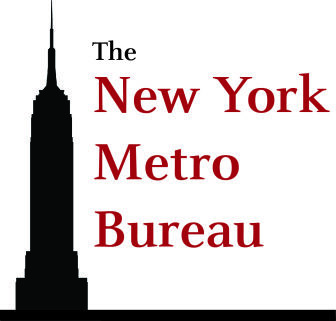SYRACUSE, N.Y. — The biggest promise of police reform came in Mayor Ben Walsh’s first executive order after 18 months in office. It happened on June 19, the first time the city recognized Juneteenth as a paid holiday.
But at a rally the following day, there was hardly a mention of the executive order. The event had been planned in advance by the local National Action Network chapter, the theme not beholden to local officials.
Hundreds gathered downtown as speakers described their experiences with police, the need for a restructuring of the department and the importance of voter participation. For hours, there was no direct mention of the order.
 Then Yusuf Abdul-Qadir, director of the central New York office for the New York Civil Liberties Union, talked about his experience negotiating with local politicians, the danger of increased surveillance as Syracuse becomes a “smart” city and the structure of modern police departments. What he then said about the executive order several protesters later echoed.
Then Yusuf Abdul-Qadir, director of the central New York office for the New York Civil Liberties Union, talked about his experience negotiating with local politicians, the danger of increased surveillance as Syracuse becomes a “smart” city and the structure of modern police departments. What he then said about the executive order several protesters later echoed.
“Let’s just be clear. We want to talk about people with cameras,” he said about a reform meant to increase body and dashboard cameras. “A camera isn’t gonna stop the violence. We don’t need no cameras.”
Activists are skeptical about Walsh’s executive order, a preliminary promise for large-scale reforms to the Syracuse Police Department (SPD) that has a long process of implementation ahead.
The order is an immediate response to 40 demands from local advocacy groups, Walsh said at a press conference last week. He will meet directly with advocacy groups as he works to put the measures in place, he said.
“Yes, I feel pressure. We all do. That’s the beauty of protests,” Walsh said last week. “That’s why over the course of the history of this country, often the most significant changes happen when people take to the streets and make their voices heard.”
Both old, new provisions in executive order
The order includes implementation of the Right to Know Act created by New York City, a review of the use-of-force policy and racism training for officers.
Many of the order’s provisions double down on reform efforts that Walsh campaigned on or pushed as mayor: an increase in body cameras, a push for more diversity in the police department and a review of its year old use-of-force policy. Some goals are new, including a push for dashboard cameras, extended education on racism and a “new model for school safety and security.” Several activists, including the leaders of a youth-led march, have demanded that school resource officers are taken out of city schools.
At this point, the reforms are far from being enacted, aside from the Right to Know Act.
“It’s a good fake effort. Now he needs to get us at the table and do some things differently,” said Cherylene “Twiggy” Billue, president of the Syracuse chapter of NAN. “We didn’t want to see one large executive order with all of those provisions, he needed to do an executive order for each. Now that we know with the swipe of a pen, he can change my life, I’m calling on our mayor to do it.”
Juneteenth marked the 20th day of marching for Last Chance for Change, an advocacy group of people under 35 (mostly in their 20s) that is separate from the Black Lives Matter movement. (The two groups often collaborate.) Working closely yet independently of the National Action Network, several of their organizers said the order was preliminary — and not all of what they are looking for.
Last Chance for Change is developing demands that don’t just change how SPD operates, but the city as a whole, including the school district, said Kayla Johnson, an organizer. Once they’re done marching for 40 days, they’ll focus on presenting additional demands to City Hall.
Other provisions of the executive order are:
- Make sure SPD officers are recording with their body cameras for the entire encounter.
- Check inventory and add provisions to all equipment in military surplus programs.
- Make public and clear the city’s contract with the Syracuse Police Benevolent Association.
- Make SPD policies available on its website.
- Comply with New York state’s 50-a provision, which makes officer personnel records public.
- Oppose attempts to weaken judicial consent decree.
- Training on the history of racism in the U.S. and in Syracuse for all officers.
The Common Council played a large role in crafting the orders. Months ago they rejected a proposed contract between Walsh and the Benevolent Association, a contract that may be posted publicly as a result of the executive order.
At last week’s press conference, Council President Helen Hudson said, “We have a very good working relationship, we have worked very well together for this whole period, and we will continue to keep moving forward. There are going to be some points that we do not agree on, and there will be points we will agree on.”
Jeff Piedmonte, president of the Syracuse Police Benevolent Association, called the executive order “feel-good legislation that doesn't do anything.”
“The morale in SPD is horrible,” he said. “No one wants to come to work because of the drama that is going on. ... As far as the protests across the country I think media is absolutely distorting what is happening in the country.”
“Anyone can say they’re going to do something ...” said Curtis Chaplain, an organizer for Last Chance for Change, on Sunday. “Not to say that [Walsh] won’t follow through, but only time will tell.”
